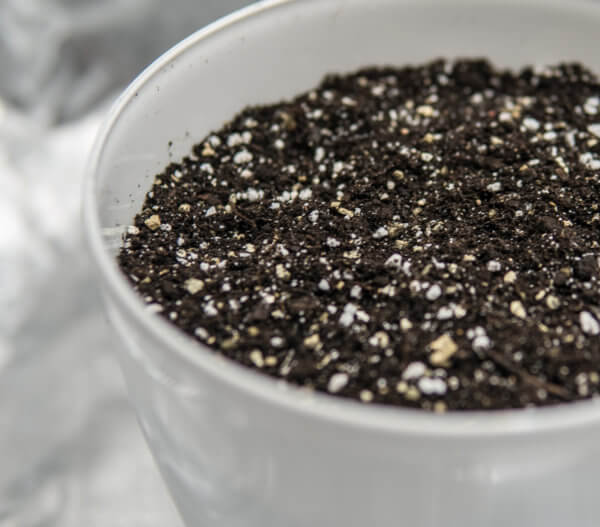

You’re probably used to seeing the little white pieces of perlite found in many potting mixes.
This soil amendment actually comes from naturally occurring silica rock that has been heated to increase the size of, and create air pockets in, each nugget (much in the same way that you pop popcorn).
Sterile and lightweight, perlite can also be mixed in with garden soil or used straight up in a hydroponic system. Mother Earth® Perlite comes in 3 sizes, including the largest perlite on the market (pieces are a whole inch in size!). Larger sizes are best for use in hydroponic baskets, while smaller sizes are better for mixing with other growing media.
Perlite is white, hard, and granular. It’s also somewhat dusty when dry, so it’s a good idea to wear a dust mask when handling it.
Why Use Perlite?
The primary reason to use perlite is to help aerate the environment surrounding plants’ root zones. Plants use oxygen absorbed through their roots to help them metabolize the sugars they make through photosynthesis, part of the process of creating food for themselves. Perlite holds air and create pockets of oxygen in the soil or water to keep root function on track so plants can get plenty of food.
Don’t confuse perlite with vermiculite, another soil amendment. Vermiculite attracts and retains water, and is used to help soils hold more moisture very different from the function of perlite.
Using Perlite in Hydroponics
The fact that perlite doesn’t hold water is why it is so useful in a hydroponic system, as the air held within its pores helps keep the system oxygenated. Perlite has a neutral pH, so it won’t affect or interact with the water or liquid nutrients used within the system. You will, however, need to occasionally replace the perlite used for hydroponics because the pores can become clogged with nutrients, algae, and plant roots, reducing its effectiveness.
Because perlite doesn’t hold water, it’s important to use it within a hydroponic system in which the plant roots continually stay wet. If you’re planning to use perlite as the sole growing medium, drip systems and bucket systems will work better than ebb-and-flow systems. Never use perlite in aquaponics, though, as the fish can breathe in the small particles, leading to clogged gills.
Using Perlite in Garden Soil and Potting Mix
Since it excels at improving soil drainage, perlite can be found as an ingredient in many potting mixes. When growing in containers, whatever is in the pot is what the plants have to work with, so using a mix that has an ideal balance of water-retaining and aerating materials can help produce the best plant growth. You can also mix perlite in with regular garden soil, but it can be difficult to make a meaningful impact on the volume of soil found in a large bed. Consider reserving perlite for areas in which you’re planning to grow plants with special water needs, such as succulents or low-water perennials. It will function as a soil aerator in the ground, just as it would in a container. Also, because perlite is neutral, it won’t affect the pH of the soil.
When it comes to aerating your growing environment, you’d be hard pressed to find a more versatile soil amendment than perlite.




